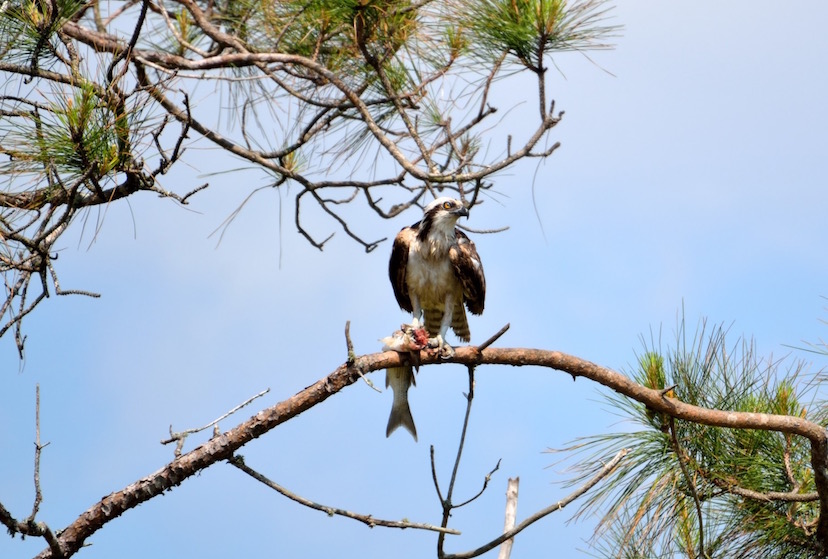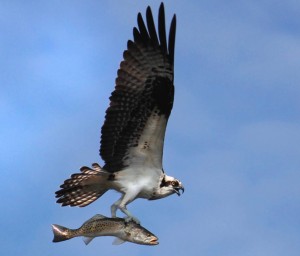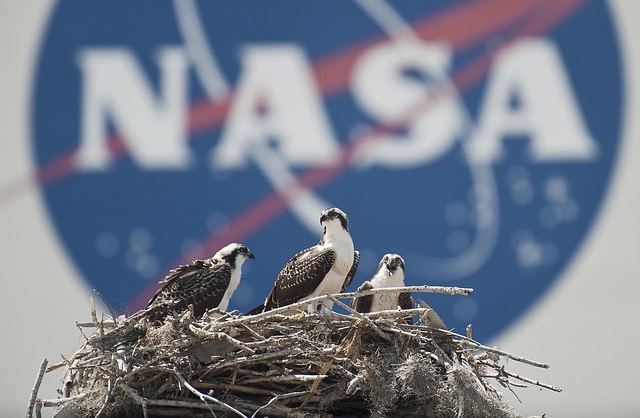Osprey (Padion haliaetus) are large raptors found near the water on every continent in the world except Antarctica. They are also called fish eagles or sea hawks due to their large size and diet made up almost entirely of fish. Like many large birds, Osprey had become threatened by the middle of the 20th century due to the use of the Pesticide DDT which weakened the bird’s eggs. DDT was banned in the early 1970s, but it still took several decades for the Osprey population to recover. Today, if you look carefully you can now spot their distinctive large bodies, brown on top snow white on the bottom sitting high up or patrolling the coast.
Most unique are the Osprey’s talons- one of which can rotate so there are two to the front, and two to the rear in order to better grab slippery fish.
When hunting, Ospreys fly hundreds of feet above coastal waters, river, or lakes, their golden eyes searching for fish below the surface of the water. Unlike some birds who will make a grab on just the surface, Osprey will plunge above their heads into the water, grabbing an unsuspecting fish several feet below and then quickly lifting off again. Special adaptations aid the Osprey such as a clear nictitating membrane that covers the eyes when diving that helps to see below water and nostrils that close to seal out water. Most unique are the Osprey’s talons- one of which can rotate so there are two to the front, and two to the rear in order to better grab slippery fish. Retaining caught fish is also aided by reverse scales on the bird’s feet that act like barbs on a hook. Once aloft and flying again, the birds will shake off excess water and position the captured fish head first, perhaps as an aerodynamic aid for more efficient flying.
If you want to know if Osprey is near, just look for their very large nests. The nests are usually built near the water upon the tops of large trees, poles, or rock outcroppings. If an Osprey isn’t flying with a fish in its clutches they usually have a stick. They will use the largest sticks for the base and outer portions while lining the nest with grasses and seaweed. They have also been known to use man-made refuse such as plastics and netting in their designs.
Ospreys usually mate for life and will use the same nest and continually add to it over time which adds to their large appearance. Inside the nest the female Osprey will tend the eggs and chicks, while the male hunts and brings back provisions. After two and a half months or so the chicks are ready to fly and begin fishing on their own.


